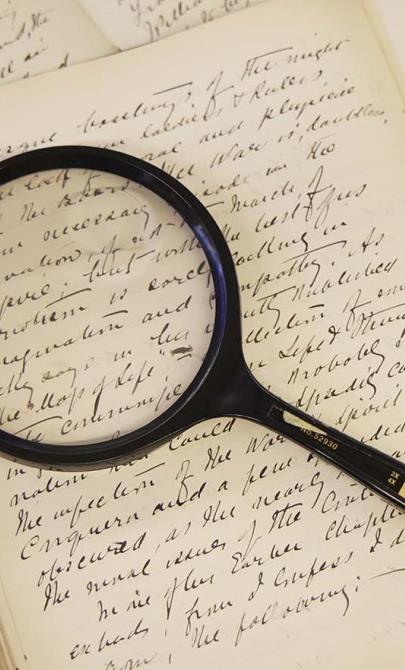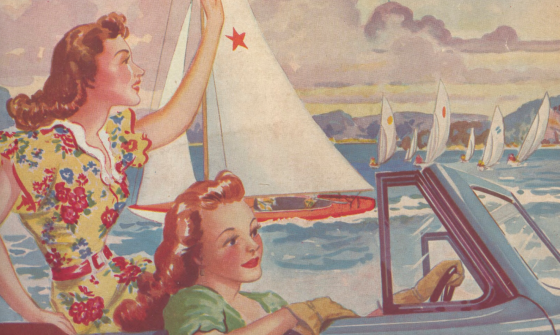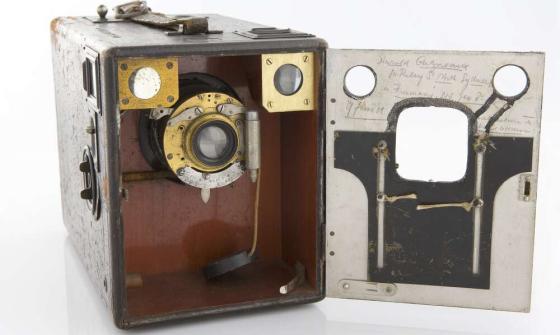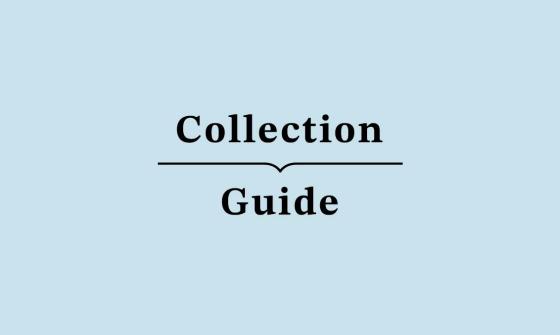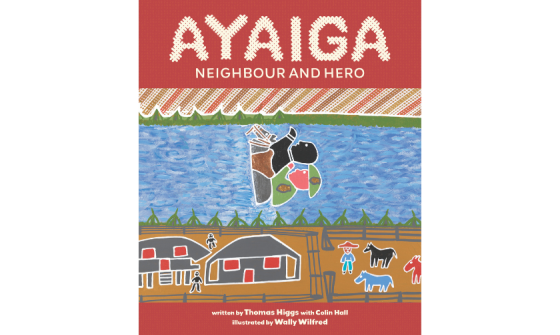Johnston Collection
Key items in the collection
Highlights from this collection demonstrate its historical significance and variety.
The collection comprises 52 charts and maps.
There are 32 charts of Australian coastlines published by the British Hydrographic Office between 1814 and 1878. They are based on surveys by:
- Matthew Flinders
- Phillip Parker King
- John Lort Stokes
- FW Sidney
- GH Richards
- F Howard
- other surveyors.
There are also 18 charts of other regions, including:
- the East Indies
- the China Sea
- the Indian Ocean
- the Pacific Ocean
- the Philippines
- New Zealand
- the west coast of North America.
The Frank Johnston Collection contains:
- 13,663 negatives
- 822 colour transparencies
- 24 folders of contact prints
- 5 albums with about 370 enlarged black-and-white prints
Johnston took these photographs between 1951 and 1961 during his trips to Queensland, the Northern Territory and the Kimberley region of Western Australia.
The collection documents various breeds of cattle and life and work on many of the cattle stations of northern Australia, including:
- Glenroy
- Brunette Downs
- Alexandria Downs
- Wave Hill
- Victoria River Downs
- Newcastle Waters
- Yamba
- Mount House
- Springvale.
There is a series of photographs depicting drovers and cattle on the journey from the Barkly Tableland to southern Queensland in 1952.
Mining is also one of the strengths of Johnston’s photograph collection. Among the mining sites recorded by Johnston were:
- Wittenoom Gorge (asbestos)
- Mary Kathleen (uranium)
- Weipa (bauxite)
- Mount Morgan (gold and copper)
Other subjects include:
- the Ord River Scheme
- Australian Inland Mission churches and hospitals
- the Humpty Doo rice project
- Wyndham
- Fitzroy Crossing
- Broome
- Halls Creek
- Thursday Island
- Katherine Gorge
- Alice Springs
- Mount Isa
- Longreach
- Cooktown
- Innisfail.
The bulk of the personal papers relate to Johnston’s overseas travels, both as an individual and as the leader of touring parties. Apart from his return journey from England in 1936, they date from 1954 to 1981 and include:
- itineraries
- participant lists
- correspondence
- photographs
- notes and leaflets
- scientific papers
Other papers in the collection include:
- notebooks and references
- correspondence about the sale of pastoral properties
- research material
- drafts of reports
- newspaper articles
- papers on specific subjects, such as dwarfism in beef cattle and Japan’s beef industry
There is also a large scrapbook containing articles and reports by Johnston on the rural economy published in newspapers and magazines between 1952 and 1970.
About Francis Johnston
Francis Henry Johnston (1910–1989) was born in Melbourne and educated at Brighton Junior Technical School. He left school at an early age and worked as a commercial artist in Melbourne, and later as a rabbiter and station hand in central Victoria.
In 1932 he went to London, where he worked with a press agency, a studio and an advertising firm. He and his wife returned to Australia in 1936, visiting the United States, Japan and China on the way, and settled in Sydney.
Publishing career
In Sydney, Johnston worked as a commercial artist before turning to publishing. In 1944 he founded F.H. Johnston Publishing Company, which mainly published books on war, aviation, travel and the pastoral industry. He also edited and published magazines, such as Australasian Book News and Library Journal, Air Travel, Wings and Qantas Airways, along with handbooks for several breed societies.
His growing interest in the cattle industry led him to travel extensively in northern Australia, visiting stations, collecting information and taking photographs.
Travel and journalism
In 1947, Johnston set up a small travel agency, Intra World Travel Services. Although he continued to publish books, his main interests from 1950 onwards were travel and journalism.
In 1952, he organised the first of his tours for graziers and farmers, visiting stations in northern Australia. Two years later he led a tour by beef growers to the United States and Canada. Over the next 20 years he organised many tours of North America, South America, Japan, India and other regions.
He arranged meetings with farmers and researchers, took photographs and collected data. He became a well-known commentator on the beef industry, contributing articles to the Sydney Morning Herald, Meat Industry Bulletin, Land, Western Livestock Journal, New South Wales Country Life, Queensland Country Life and other journals. He led his last overseas party in 1981.
Publications
Johnston was the author of This Land of Ours: Australia (1949), with George Farwell as his co-author, and Cattle Country: An Illustrated Survey of the Australian Beef Cattle Industry (1960).
Background to the collection
In 1975, the Library purchased a collection of Admiralty charts that Johnston had originally acquired from a Captain Sutherland. His collection of photographs was purchased in 1984. In 1985, Johnston donated his manuscripts and papers under the Taxation Incentives for the Arts Scheme.
The charts in the Johnston Collection are kept together in the Maps collection. They have been catalogued as a collection and a listing of the individual charts and maps is available in the Maps Branch.
The photographs are held in the Pictures collection. The 24 folders are arranged chronologically and there is a summary by Johnston in each folder. The photographs have been catalogued at the collection level, while a small number have been individually catalogued and digitised.
The personal papers are held in the Manuscripts collection. Most of the papers were filed by Johnston in 56 binders or albums, each of which has a summary written by him in 1985. Use the finding aid.
A collection of Australian and Pacific artefacts assembled by Johnston is held in the Macleay Museum at the University of Sydney.
This guide was prepared using these references:
- Frank Johnston, The Frank H. Johnston Collection of Works, May 1985, MS 8272, vol. 1A.
- Barbara Perry, Oral history interview with Frank Johnston, 1984, ORAL TRC 1668.
- Jill Sykes, A Man with his Head in the Clouds, Sydney Morning Herald, 11 August 1979, p. 20.


